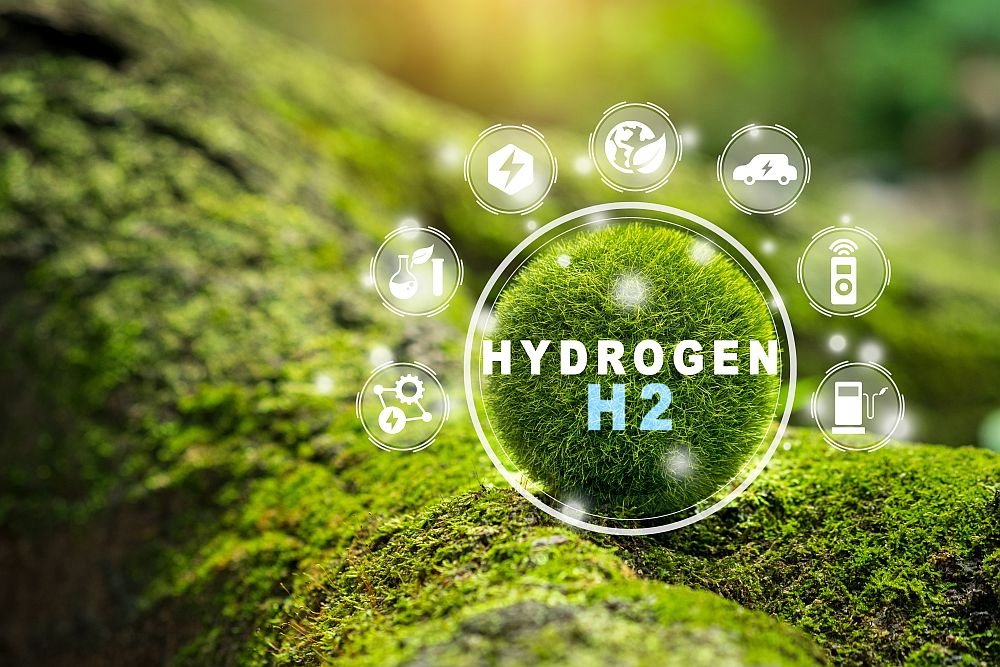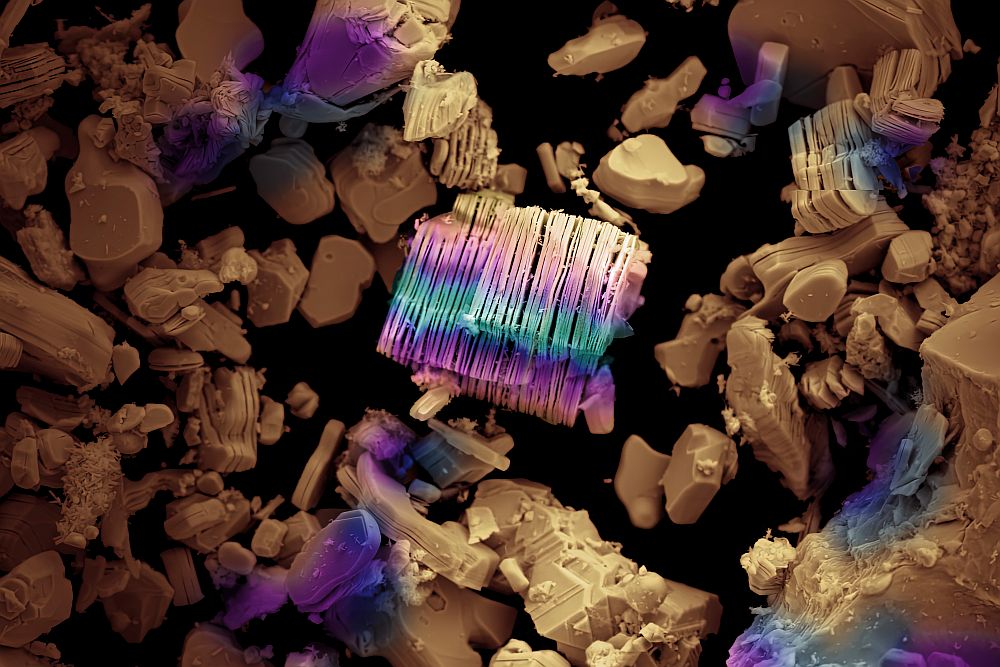
[Image above] Credit: Juicy FOTO, Shutterstock
As the United States and other parts of the world aim toward net-zero carbon emissions, hydrogen technology continues to stand at the forefront of renewable energy conversations. Hydrogen can serve as a clean fuel, meaning it only gives off heat and water when it is burned, as opposed to fossil fuels, which emit greenhouse gases such as carbon dioxide (CO2) when burned.
Although hydrogen can be produced industrially through methods such as steam-methane reforming or electrolysis, these production methods, respectively, either emit CO2 or are currently too costly for widespread adoption.
Geologic hydrogen, or hydrogen that occurs naturally below Earth’s surface, could in theory serve as a good compromise because it already exists and simply needs to be extracted. But to date, questions surrounding the potential scale and location of geologic hydrogen means it has never really been found in large quantities before—yet efforts to discover it remain underway.
In May 2025, researchers at the University of Oxford, as well as Durham University and the University of Toronto, published a review paper that explores the possibility of sourcing clean hydrogen from Earth’s crust.
According to the article, three key ingredients determine whether hydrogen will accumulate naturally: a source rock, water within the source rock, and conditions for the hydrogen to remain trapped within the geological structure after the water–rock reaction.
That last ingredient is essential when it comes to extracting geologic hydrogen. Over the past billion years, Earth’s crust is estimated to have generated volumes of hydrogen with energy equivalent to 170,000 years’ worth of the oil we use today. However, much of this hydrogen may have already been lost to evaporation, absorption, or chemical or biological processes (e.g., “eaten” by microbes) beneath the crust.
It is difficult to discern how much societally viable hydrogen remains in Earth’s crust, especially given the variety of ways that researchers around the globe track, sample, and measure hydrogen. But in the new study, the researchers note that helium may serve as a tool for understanding the regional release mechanisms and flux of hydrogen.
“Formed in crystalline systems through radioactive decay, helium (4He) is often co-produced with hydrogen from the same source rock region. In contrast, helium is not consumed by chemical or biological processing and provides a clear resolvable signal in near-surface crustal fluids. With similar physical characteristics, such as solubility and diffusivity, helium provides a relevant proxy for understanding hydrogen source–rock retention, expulsion, and transport efficiencies,” they write.
This understanding of the conditions necessary for geologic hydrogen formation and retention could help pave the way for finding and extracting this low-carbon renewable energy resource. However, the researchers caution that geologic hydrogen should not be considered an abundant resource—Earth does not provide hydrogen in response to human environmental needs, after all, but at its own pace over millions of years.
Regardless, first author Chris Ballentine, professor in the Department of Earth Science at the University of Oxford, expressed optimism in a University of Oxford press release that this research takes steps in the right direction for the renewable energy industry.
“One successful exploration recipe that is repeatable will unlock a commercially competitive, low-carbon hydrogen source that would significantly contribute to the energy transition—we have the right experience to combine these ingredients and find that recipe,” he says.
This research inspired the authors to form the company Snowfox Discovery Ltd., which will continue the work of exploring Earth for societally significant natural hydrogen accumulations.
The review article, published in Nature Reviews Earth & Environment, is “Natural hydrogen resource accumulation in the continental crust” (DOI: 10.1038/s43017-025-00670-1).
Storage in the subsurface: DOE program explores hydrogen containment possibilities
Hydrogen is difficult to store in part due to its low volumetric energy density, which means it takes up a lot of space. But as we know from the discussion of geologic hydrogen above, Earth’s subsurface offers a great place for both forming and storing hydrogen thanks to the underground’s enormous volume and intrinsic layers of security.
As described in an earlier CTT, the United States Department of Energy is researching the potential of underground storage options through the program Subsurface Hydrogen Assessment, Storage, and Technology Acceleration (SHASTA). So far, the program has mainly assessed the potential of salt dome caverns and caverns as storage locations, but funding for SHASTA was extended into 2025 so it can continue exploring other viable options for underground hydrogen storage.
As the need for renewable energy solutions continues to grow, Earth once again shows it can provide for ours needs by serving as both a source of and storage place for hydrogen.
Author
Helen Widman
CTT Categories
- Basic Science
- Energy
- Environment


